A special kind of mountain “idyll”
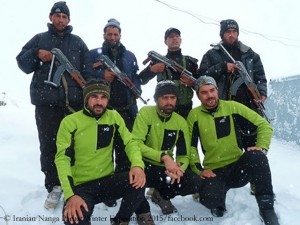
Iranian climbers and their guardians
Heavily armed police officers in the base camp – honestly, that would spoil my joy of mountaineering thoroughly. Soon these special forces are to be not only the exception but the rule in Pakistan, at least at “prestige mountains” like Nanga Parbat (8125 m), K 2 (8611 m) or Rakaposhi (7788 m) and also in much visited camps on the glaciers in the north of the country. In the region of Gilgit-Baltistan, a special “High Altitude Police Unit” was introduced this week. It consists of 50 men now and should be increased to 100 police officers later. The security forces get special clothing against the great cold and are trained by mountaineers, so that they may help in rescue operations in case of emergency. But first and foremost it is their duty to protect foreign climbers.“Because of the ongoing military offensive in the country, there is a high risk of reprisal attacks and we can’t afford to repeat any incident like Nanga Parbat”, police spokesman Mubarak Jan said.
![]() read more
read more
Dawa Gyaljen Sherpa: “Cold war inside”
He was one of the first at the scene. After the fatal avalanche at the Khumbu Icefall on 18 April 2014, Dawa Gyaljen Sherpa rushed down from Camp 2 to help the buried climbers. “On the spot, we encounter dead bodies and blood everywhere. There were a row of dead bodies in one main rope swept into the crevasse”, the 28-year-old Sherpa wrote to me in 2014. “When we pulled the rope, we found the body one after another in the same crevasse. Some of the dead bodies were buried into the snow and we could see only the boots, it seemed those bodies were upside down.” 16 Nepalese were killed in the avalanche, two weeks later the Base Camp was empty, the season finished. Dawa Gyaljen Sherpa has summited Everest four times, he did it for the first time when he was 19 years old. Later Dawa studied in UK. Now he’s living in Kathmandu. I asked him what he thinks about the upcoming Everest spring season. He replied openly. A Sherpa point of view, an interesting insight.
![]() read more
read more
Russell Brice: “At last”
Russell Brice breathes out. “At last”, the 62-year-old New Zealander, head of the expedition operator Himalayan Experience, replies to my question on what he thinks about the planned new route through the Khumbu Icefall on Mount Everest. “We have been asking the SPCC (Note: The Sagarmatha Pollution Control Comitee is responsible for the route through the icefall.) to put the route more central since 2012. Now at last they have listened to the foreign operators instead of the local Sherpas who asked for the route to be moved so as they could travel faster … but not so safely.” Brice doesn’t expect that the new route will take the clients as much time as SPCC president Ang Dorjee Sherpa estimates: “It will take only about one hour longer, not three to four hours. You see there are not many people around these days who have been this way. But I have.”
![]() read more
read more
Discussions about new Everest route
No matter how likely something seems to be, things may turn out quite differently. For many years, most climbers on the Nepalese side of Everest thought that the route through the Khumbu Icefall, which led – seen from below – along the left hand side directly below the West Shoulder, was safe. Until 18 April 2014 when a huge ice avalanche released and killed 16 Nepalis. The Sherpas revolted, the season was over before it had begun. This spring, the route is to be relocated further away from the West Shoulder, about 40 meters to the centre of the Icefall. Ang Dorjee Sherpa, president of the Sagarmatha Pollution Control Commitee (SPCC), which is responsible for the route, said to the Himalayan Times, he expected that the clients need three to four hours more to reach Camp 1. Although the new route is not as risky as the old one, it is more difficult, says Ang Dorjee. Not all are convinced that this is the last word.
![]() read more
read more
The best ager is on the road again
If someone is a “best ager“ in mountaineering, then Carlos Soria. The Spaniard really got cracking beyond 50. At the age of 51 Carlos summited Nanga Parbat, his first eight-thousander. He is now 76 (!) years old and has scaled eleven of the world’s 14 highest mountains. This senior is simply unstoppable. If everything happens as he imagines, not later than in spring 2016 Soria could complete his collection and thus – then aged 77 – become the oldest mountaineer who stood on all 14 eight-thousanders. So far, this “record” is held by Polish climber Piotr Pustelnik, who scaled his last eight-thousander in 2010 at the age of 58. This spring, Carlos Soria set out to climb two huge mountains in Nepal: the 8091-meter-high Annapurna and, not far away, the 8167-meter-high Dhaulagiri. If he is able to summit both, only the 8027-meter-high Shishapangma in Tibet would be missing in his collection. Carlos is already in Nepal.
![]() read more
read more
Kaltenbrunner: “All Everest parties around one table!”
It has become quieter around Gerlinde Kaltenbrunner. A fact that she actually likes. The 44-year-old Austrian is still a sought-after speaker. So Gerlinde can not complain about a lack of work. But she has enough time to travel around. Without any pressure – that disappeared after she had successfully completed her big project by climbing K 2 in 2011: She was the first and so far only woman in the world who climbed all 14 eight-thousanders without bottled oxygen. Our paths crossed on Mount Everest in 2005, when she tried (in vain) with Ralf Dujmovits and Hirotaka Takeuchi to climb the North Face and I reported about it. In 2010, she reached the summit via the Tibetan normal route. I met Gerlinde at the trade fair ISPO in Munich a week ago and we talked about Everest.
Gerlinde, you climbed Mount Everest as well as the other 13 eight-thousanders without supplemental oxygen. At the moment there are a lot of discussions about what happens on the highest of all mountains, especially because of the avalanche disaster and the subsequent end of all expeditions on the Nepalese side in spring 2014. The Sherpas revolted. Did this conflict boil up and over?
![]() read more
read more
Moro plans winter traverse on Manaslu
The cat is out of the bag. Simone Moro has revealed his Himalayan winter project: The 47-year-old Italian wants to climb Manaslu in Nepal, with 8,163 meters the eight highest mountain in the world. Not via the normal route, but with the detour via the upstream 7992-meter-high Pinnacle East. The Polish climbers Jerzy Kukuczka and Artur Hajzer were the first climbers who succeeded in climbing this spectacular traverse in November 1986, i.e. in fall. The first winter ascent of Manaslu – without traverse – was also made by Polish climbers: Maciej Berbeka and Ryszard Gajewski reached the summit in January 1984. Simone Moro will not travel alone to Manaslu within the next few days.
![]() read more
read more
Ueli Steck: “I accept the risk”
Actually, Ueli Steck only wanted to do an active holiday in Tibet in autumn 2014. The 38-year-old top climber from Switzerland planned to climb the eight-thousander Shishapangma with his wife Nicole via the normal route. It soon became clear that it would not be as easy as it seemed first because there was too much snow on the mountain. “But just sitting around in the base camp, that’s really not my thing”, Ueli told me last week at the trade fair ISPO in Munich. “Thus I accompanied the guys in their summit attempt.” These guys were the German ski mountaineers Benedikt Boehm, Sebastian Haag and Martin Maier and the Italian Andrea Zambaldi. In the summit area, an avalanche descended: Haag and Zambaldi died, Maier survived seriously injured. Only Steck and Boehm were not swept away by the avalanche. Reason enough to talk with Ueli about risk and luck:
Ueli, people say, a cat has nine lives. How many lives do you have?
![]() read more
read more
Dujmovits: “I want to make it for myself”
His bookmark is still in the book of Everest. Ralf Dujmovits scaled all 14 eight-thousanders, as the only German so far. Only on Mount Everest in 1992, Ralf used bottled oxygen – something that the 53-year-old sees as a blemish by today. This spring, Ralf wants to travel to the highest mountain in the world for the already seventh time, for the fourth time to the Tibetan north side. Last year Dujmovits reached there an altitude of 8,300 meters on the northeast ridge. At that time he got angry about his own mistakes. And so Ralf’s repeatedly announced “definitely last” attempt on Everest became once again just his most recent try. This year, he wants to climb in a team with the Canadian Nancy Hansen. I met Ralf at the trade fair ISPO in Munich and asked him about his Everest plans:
Ralf and Mount Everest, a never ending story?
![]() read more
read more
Moro: “I trusted them to succeed“
Over an out. The Russian winter expedition on Nanga Parbat is finished. Nickolay Totmjanin, Valery Shamalo, Serguey Kondrashkin and Victor Koval decided to go home. “Today is exactly the 45th day since we left St. Petersburg, and, unfortunately, the time for our expedition runs to the end. The mountain is clear at last, for the first time in two weeks, but there’re still snow flags on the top due to the strong wind“, the four climbers told Russianclimb via SMS. “We pack Base Camp and are going down.“ A few days ago, they had reached Camp 4 at 7,150 meters on the Rupal (south) side of the mountain, but had been forced back by storm and cold. Thus, only the climbers on the Diamir (north) side are staying on Nanga Parbat.
![]() read more
read more
Moody Nanga Parbat
If mountains really have a soul, Nanga Parbat obviously suffers from a full-blown winter depression. Year after year the eight-thousander in Pakistan rebuffs climbers who try to climb it first in the cold season. Almost as if to say: “Get off my back! If you bother me, see where that will get you! “ Now, this winter’s second summit attempt also failed. On the Rupal side, the south side of the mountain, Russians Nickolay Totmjanin, Valery Shamalo, Serguey Kondrashkin and Victor Koval had to turn around from Camp 4 at 7150 meters. The four climbers from St. Petersburg had tried to sit a snow storm out, with wind speeds of 100 km/h. No chance.
![]() read more
read more





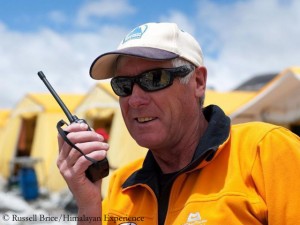
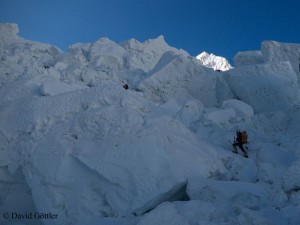
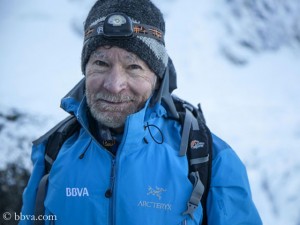
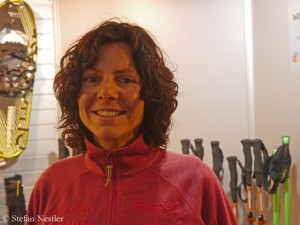
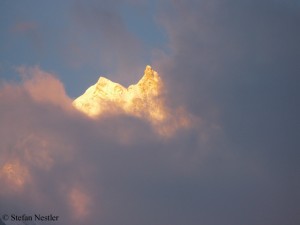
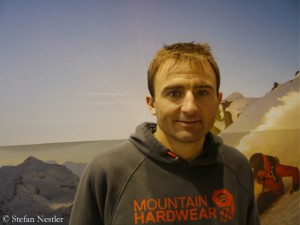
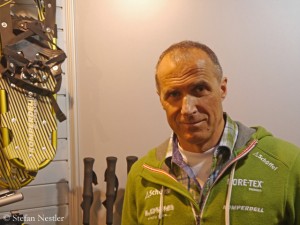
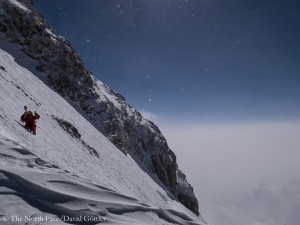
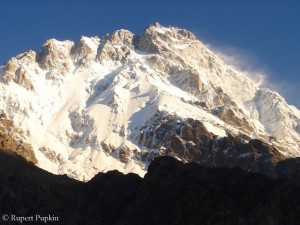

Feedback